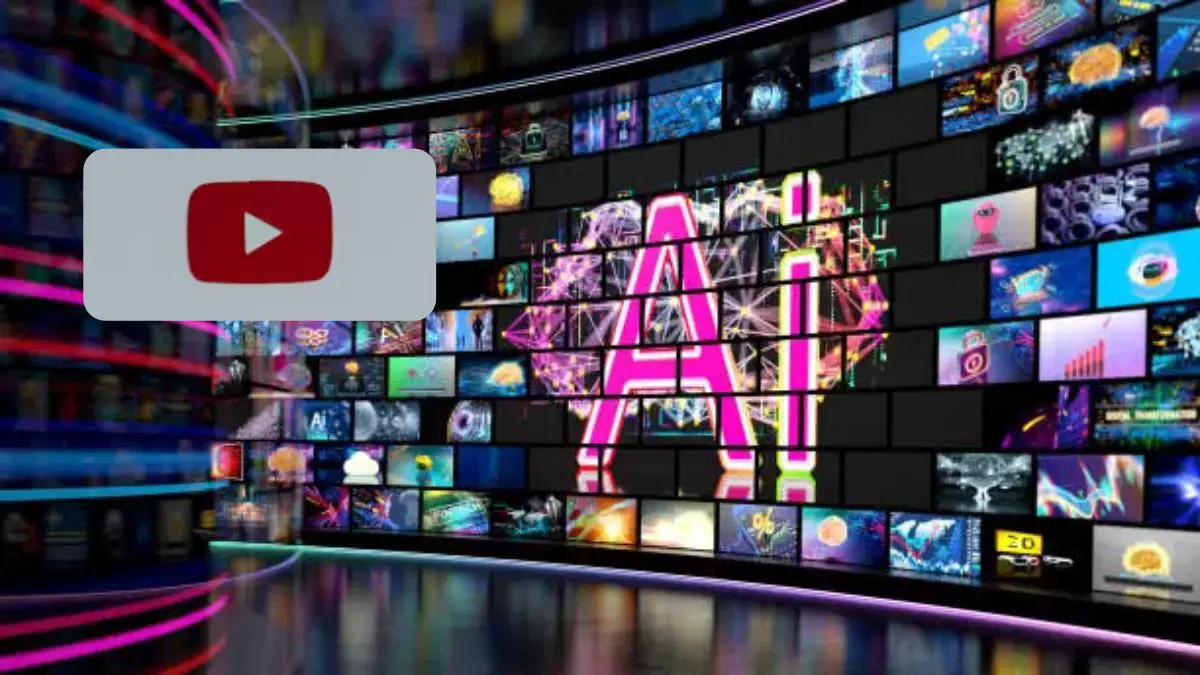In a bold move to strengthen online safety for young audiences, YouTube has begun rolling out artificial intelligence (AI) technology that can estimate whether a user is under 18 years old—even if they enter a fake birthday. The Google-owned platform announced that its new “age-estimation model” will automatically apply safety features, restrict access to adult content, and reshape the way teenagers experience the video-sharing site.
This change addresses one of the longest-standing problems in the digital age: kids lying about their age to bypass restrictions. With AI stepping in, YouTube hopes to create a safer environment for minors while reducing reliance on invasive ID checks. But the move also raises questions for creators, parents, and users who fear being wrongly flagged.
In this article, we’ll explore how the system works, what protections it enables, its impact on creators, and what the future of AI-driven age verification could look like for digital platforms.

Why YouTube Is Turning to AI for Age Verification
For years, platforms like YouTube, TikTok, and Instagram have struggled to keep younger users away from adult-only spaces. The reality is that millions of teenagers sign up for accounts by entering a false date of birth. Since most services rely on self-declared birthdays, enforcement has been weak.
Regulators and watchdog groups have consistently criticized platforms for not doing enough to protect minors from inappropriate content, addictive usage patterns, and predatory advertising. In the U.S. and Europe, governments have also tightened scrutiny on tech companies, demanding more responsibility in shielding children online.
YouTube’s AI-powered age estimation is a direct response to this pressure. Instead of making users upload an ID at sign-up—which can feel intrusive and compromise privacy—the system works silently in the background. It analyzes behavioral signals, account activity, and other patterns to predict a user’s true age.
How YouTube’s Age-Estimation AI Works
The machine learning system doesn’t just rely on birthdays typed into the profile. Instead, it studies:
- User behavior: Patterns such as watch history, search activity, and interactions with recommended videos.
- Account characteristics: The age of the account, device information, and activity trends.
- Engagement signals: How users interact with certain categories of content, which may hint at maturity levels.
While YouTube hasn’t revealed every detail—for obvious security reasons—the AI is advanced enough to override the declared age in a profile. If the system believes a user is under 18, it immediately adjusts their account experience.
James Beser, YouTube’s Senior Director of Product Management for youth products, explained:
“This technology enables us to infer a user’s age and apply protections that are independent of the birthday entered at sign-up.”
In short: if you try to cheat the system by claiming you’re older, AI may still catch you.
What Happens If You’re Flagged as Under 18
Being identified as a teenager by YouTube’s AI automatically activates a set of protective measures. These include:
1. Limited Advertising
Teens will only see non-personalized ads. Unlike personalized ads that track online behavior, these are generic and less targeted. While this reduces advertising revenue for YouTube and creators, it protects younger audiences from aggressive ad profiling.
2. Digital Wellbeing Features
By default, teen accounts will have reminders to take breaks, pause videos, and set bedtime alerts. These features aim to prevent binge-watching and promote healthier screen habits.
3. Restricted Recommendations
YouTube will scale back on recommending videos that may be harmful when watched in excess—such as extreme fitness, dieting, or sensational content. Age-restricted videos meant for adults will also be blocked entirely.
4. Upload and Monetization Limits
If YouTube’s AI identifies a creator as under 18, their video uploads will be made private by default, and they’ll lose certain monetization options, such as gifts during vertical live streams.
This ensures that teens aren’t unintentionally exposed to the risks of running a public channel without safeguards.
What If You’re Wrongly Classified?
AI is powerful, but it isn’t perfect. False positives are possible—where adults may be incorrectly flagged as teenagers. To address this, YouTube offers an appeal process.
Users can prove their age through:
- Government-issued ID verification
- A selfie check
- A valid credit card (as proof of adulthood, not for billing)
This gives legitimate adult users a way to restore full access without losing features unfairly.
The Impact on YouTube Creators
Creators form the backbone of YouTube, so any policy that affects viewership and revenue has wide implications. YouTube has been upfront about the fact that some creators may see changes in their audience metrics:
- Reduced Teen Views: Since non-personalized ads are shown to under-18 users, revenue from teen audiences will decline.
- Private Upload Restrictions: Young creators under 18 will see their uploads default to private, limiting visibility.
- Monetization Adjustments: Features like gifting during vertical live streams will be disabled for those classified as minors.
However, YouTube expects the overall impact to be minimal for most creators. The company has already tested similar AI systems in other regions and found the results manageable.
Starting Small: U.S. Pilot Rollout
For now, YouTube is limiting this age-verification rollout to a small group of U.S. users. This cautious approach allows the company to test effectiveness, collect feedback, and iron out issues before expanding globally.
Creators are being consulted during this pilot stage to ensure the system doesn’t disrupt the ecosystem more than necessary. Once refined, YouTube plans to gradually extend the technology to more users worldwide.
Balancing Safety and Privacy
One of the biggest challenges in digital child safety is finding the balance between protection and privacy. Requiring ID uploads for every user could compromise sensitive data, while not verifying at all leaves minors vulnerable.
YouTube’s AI solution aims to strike that middle ground:
- No invasive verification at sign-up
- Automated background analysis for safety
- Optional ID verification only if disputes arise
This approach allows families to feel safer without adding unnecessary friction to the user experience.
Why This Matters for Parents
For parents, this update could bring peace of mind. Instead of relying solely on kids being honest about their birthdate, the platform now has an extra layer of detection.
Key benefits for parents include:
- Greater confidence that inappropriate content won’t slip through
- Built-in digital wellbeing reminders for healthier screen time
- Less exposure to targeted advertising
Of course, parental supervision is still crucial, but YouTube’s new system provides additional backup.
Industry-Wide Implications
YouTube isn’t the only platform facing pressure to protect children online. TikTok, Instagram, and Snapchat have all introduced stricter teen settings, but enforcement remains a struggle.
If YouTube’s AI proves successful, it could become a blueprint for other platforms. Expect similar machine learning-based age estimation to appear across the digital landscape, from gaming services to social media apps.
Governments may also see AI verification as an acceptable compromise between mandatory ID checks and minimal oversight.
Challenges and Concerns
Despite the benefits, several challenges remain:
- Accuracy: Can AI truly distinguish a 17-year-old from an 18-year-old? The margin for error could frustrate users.
- Creator Revenue: Non-personalized ads generate less income, which may discourage creators with teen-heavy audiences.
- Teen Workarounds: Determined adolescents may still find loopholes, such as using VPNs or multiple accounts.
- Privacy Concerns: Even though IDs aren’t required upfront, some users may be wary of how their behavioral data is analyzed.
YouTube’s Message to Families
James Beser summed up YouTube’s commitment by emphasizing safety without compromise:
“Families rely on YouTube to offer a safe and enriching experience, and we’ll continue to invest in safeguarding their freedom to surf the web safely.”
YouTube wants to be seen as a pioneer in online child protection—balancing user freedom with modern safeguards powered by AI.
FAQs on YouTube’s AI Age Verification
Q1. Will YouTube ask everyone to upload an ID?
No. The AI works automatically. ID checks are only needed if you appeal against a wrong classification.
Q2. What if I’m 18 but flagged as underage?
You can prove your age using government ID, a selfie, or a credit card verification.
Q3. Does this apply only in the U.S.?
Currently, yes. YouTube is piloting the system with U.S. users before a broader rollout.
Q4. How does this affect creators?
Creators under 18 will face restrictions on uploads and monetization. Adult creators may see slightly reduced ad revenue from teen audiences.
Q5. Is my privacy at risk?
YouTube says the AI doesn’t require personal documents upfront. Data is analyzed in aggregate to estimate age.
Final Thoughts: A Step Toward Safer Online Spaces
The introduction of AI-driven age verification marks a turning point for YouTube and potentially the wider digital world. By combining safety, privacy, and machine learning, the platform hopes to address one of the internet’s oldest loopholes: children pretending to be older than they are.
While the system isn’t perfect—and creators may feel some financial pinch—the long-term goal is clear: to create a healthier, safer, and more trustworthy online environment for teens.
If successful, YouTube’s AI could set a new industry standard, proving that protecting children online doesn’t always have to come at the cost of user experience or privacy.

